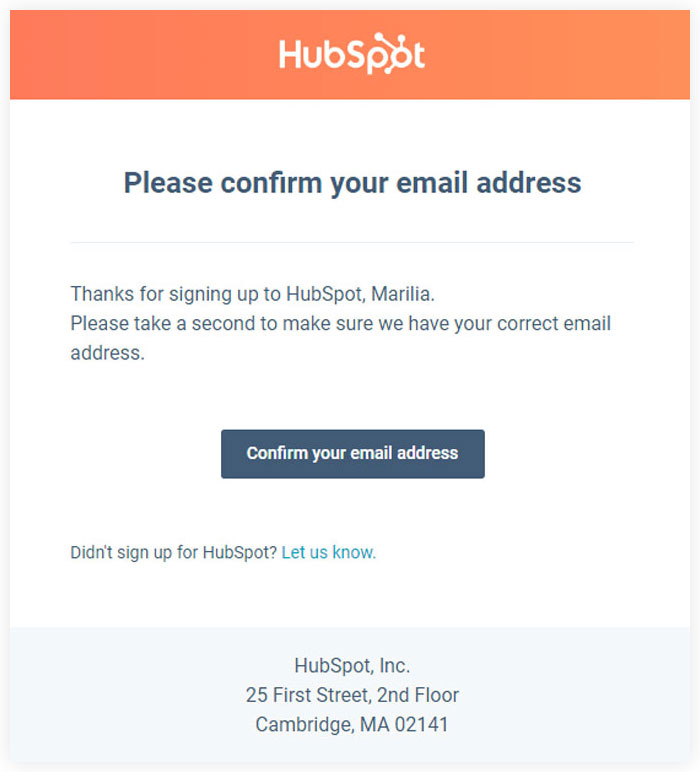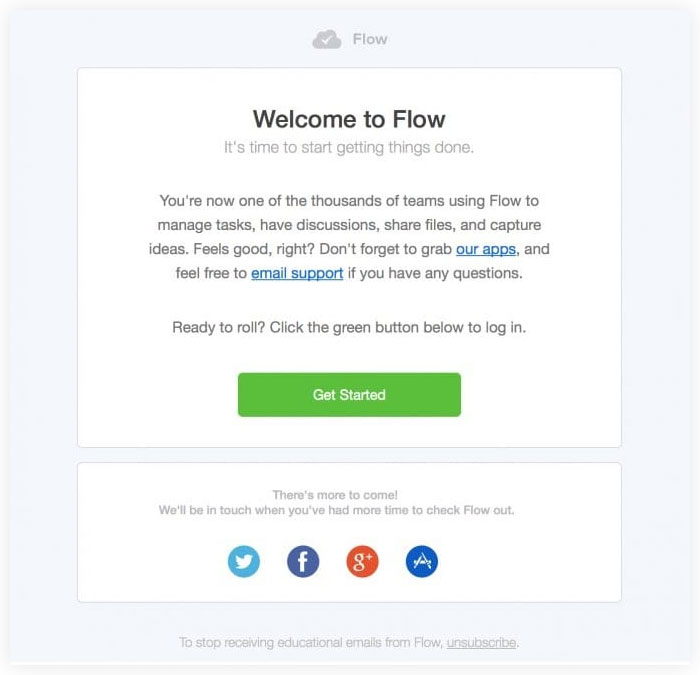The first milestone that most businesses want to achieve is to get a user to sign up for their services. After signup what you need to do? This will make your brand reach the next milestone that the brand needs. Onboarding emails will help your brand to be successful.
It is not just about sending a welcome email. It is a process that needs to be followed. To create an effective onboarding email, in this blog we have discussed a few tips that can help you out.
Contents
What are Onboarding Emails?
Onboarding emails are the emails that a brand sends right after a customer signs up or makes a purchase. These emails educate new customers about the key features, services, and products of the brand. It is like a first interaction with the customer to give them a better customer experience.
Why are Onboarding Emails Important?
Customer experience (CX) is very important for brands therefore, Onboarding emails play an important role in it. It shows users that the brand understands their pain points.
Here are some points that will help you to understand why onboarding emails are important:
- It educates new customers and welcomes them
- It engages them and encourages them to engage more
- It helps you communicate with new users
- It reduces churn rate
- It improves customer retention
- It converts leads into paying customers
When utilizing onboarding software, these emails can be automated and customized to create a smoother and more engaging experience for new customers, ensuring you don’t miss any crucial step in the onboarding process.
How to Create an Onboarding Email Series?
Onboarding emails are sent to educate the customer about the brand and product. Creating an effective onboarding email series will boost your conversion rates. It will help your brand in familiarising users with your product/services and get the most benefits from it and get a better experience.
To create it here are some points that we discuss which are as follows: –
- Research and target customer: – To create a tailored message in your onboarding emails you need to research about the audience. Understand your visitor’s needs and pay attention to how visitors use your website or app.This will help you to get the conversion.
- Segment your email list: – You must do segmentation on your email list. It will help you to send relevant content to your users. Moreover, it will help you find the target for the right product/services. All customers are different and their needs so you have to segment them according to basic segmentation techniques.
- Create a well:- Prepared onboarding email sequence: – Creating an onboarding email sequence is very important as onboarding is a process. It is almost a 15 day process. In the onboarding email sequence you need to remember a few points:-
- First, you have to send a welcome message as soon as the customer signs up or purchases a product/service.
- Next, send the second one after 2-3 days and tell them about product features.
- Then in another email send your brand success story and a personalised message.
- Get them to know about how they will get benefits by using services or products.
- Offer them a discount to convert them into paying customers.
- Activate their emotions: – Tell them stories that will activate their emotions. Emotions play a crucial role when it comes to decision making.
- Include a single CTA: – Always remember to include CTA and make sure you add just one CTA since it can create confusion among customers.
- Offer help: – In all onboarding emails offer help to your customers. Always provide a way to communicate. Send them emails according to the sequence.
Onboarding Email Best Practices
Here are some best practices for creating successful onboarding email campaigns:
- Build brand awareness with brand logo
- Emphasise on product features that solve clients’ problems.
- Must create a catchy subject line that will encourage the recipient to open an email and reflect the main purpose of the onboarding email.
- Increase user engagement and encourage them to share and refer the brand to their family and friends.
- Must offer a free trial to a new customer for a trial of the product or offer them a special discount.
- Include customer feedback and reviews for social proof as customers like to know and trust other views.
- Use personalization and send tailored emails for a personalised approach.
- Try to understand the reasons for the churn rate. Ask users why they are not using your product and how to improve it.
Top Onboarding Email Templates
Here are some templates that you can use for onboarding emails: –
1. Formal Onboarding Email Template
Welcome to [COMPANY NAME]
Hi [FIRST NAME],
Thanks for signing up with [COMPANY NAME]. Our mission is to [COMPANY MISSION/PRODUCT VALUE PROPOSITION].
With your new [COMPANY NAME] account, you’ll get:
[TOOLS] [BENEFITS] [CUSTOMER SUPPORT]Please make sure to complete your profile and add your [CUSTOMER PREFERENCES] so we can send you content and resources that will help you get started.
We recommend new customers check out the following resources:
[BLOG POST] [EBOOK] [VIDEO]For any customer support, reach out to us via phone [NUMBER], email [ADDRESS], or live chat [CLICK-TO-CHAT].
Follow us on [SOCIAL LINKS] to get the latest updates!
2. Thank you email for onboarding
Make sure to say thanks and give feedback! For that, you can use this sample email to thank you for onboarding.
Hi (Recipient’s name),
I appreciate the time, effort, and investment you’ve put into the onboarding process. All the information and support have made me feel at home here quicker than I thought possible.
I just wanted to share my positive experiences with you.
Thanks,
(Your name)
3. The social proof welcome email
Use this email template if you have a large customer base or success stories that can highlight your tool’s value.
Hey [Name]!
[Start with social proof and help the user identify with the audience]If you’re anything like the other 25,000+ [Product] customers, you’re a [empathise with the audience and show you understand them] busy creator with not a lot of spare time on your hands.
That’s exactly why we built [Product]: [stress benefit] to make selling your digital products easy.
[Set expectations for the trial]For the next few days, I’ll be walking you through how you can make the most of [Product], including some tips on how others are putting [Product] to use in their businesses.
[Offer the shortest path to value for the user]We can also migrate your content and import your contacts for you, so just let me know if you’d like us to get started on that.
Talk to you soon.
4. Book a demo sales email
The goal of this email is to get a user on a call. Especially important in high-touch onboarding.
Hey [Name],
This is [Your name], CEO at [Product]. I might not know you personally yet, but I’m pumped that you’re here!
I noticed that you signed up for [Product]. and I’d like to personally thank you. It means a lot to us. 🤗
The quickest and easiest way to get started is to get a 1:1 demo of [Product] with me.
[Explain why they should book a call with you.]We found that people who jump on a call with us will get started 3 days faster than the rest, and get 40% more leads in their first campaign. I’d also love to show you how some of our customers already use [Product] to [get the biggest benefit].
Talk soon
[Your name]Onboarding Emails Examples
These are some examples that will help you to create effective onboarding emails and make you understand about how to create them. They are as follows: –
1. Use Personalization

Adding a personal touch to the email will make your recipient feel important. Addressing the recipient with a name will get their attention. This will help you to connect with your customer easily. It should be friendly and should not be like a sales pitch only.
2. Start with a confirmation email

For a successful onboarding email start it with a confirmation email. It is important to ensure that your subscribers are real people and email addresses are legitimate.
3. Simple and a short message

Just manage a simple and short message in the onboarding email as it does not look over or salesy. Try to use an eye-catchy yet simple design. Take a look at the below example from Flow.
4. Let them know your next step

Show them the next step that they should take. Guide them about the product or what they gain from it.
5. Include CTA

CTAs grab your customers’ attention and motivate them to take action. To create a perfect CTA, you need to use appropriate text and images to improve its effectiveness. To help customers see what they can do with it, emphasise the benefits of what you offer rather than the features.
6. Give rewards

Giving rewards to your customers will encourage them to engage more. A congratulatory message or reward will uplift their decision. It gives them a sense of achievement and honor.
Conclusion
Onboarding is a process that will help you to provide a better customer experience. It will increase the conversion rate as it builds a strong connection between the brand and the customer.
You always need to improve it as the market is ever-changing as well as a customer also grows with technology. The tips and examples here will give you some insight into how to create an effective onboarding email campaign.
FAQs
1. What are Onboarding Emails?
Onboarding emails are the emails that a brand sends right after a customer signs up or makes a purchase from you.
2. Why are Onboarding Emails Important?
Here are some points that will help you to understand why onboarding emails are important: –
- Educate new customers and welcome them
- Engage them and encourage them to engage more
- To communicate well with new users
- Reduce churn rate
- Improves customer retention
- Converts leads into paying customers
3. How to Create an Onboarding Email Series?
Creating an effective onboarding email series will boost your conversion rates. To create it here are some points: –
- Research and target customer
- Segment your email list
- Create onboarding emails flow
- Trigger the user’s emotion
- Use a single CTA
- Communicate
Also Read:
- Saas Onboarding Emails: Example, Templates & Best Practices to Write Them
- Top 10 Email Marketing Templates to Increase Conversion
- Email Marketing Best Practices to Improve Campaign Conversion Rate
- Best Small Business Email Marketing Strategies for Better Conversion
- 17 Highly Effective Abandoned Cart Emails to Win Back Customers

























 Email
Email SMS
SMS Whatsapp
Whatsapp Web Push
Web Push App Push
App Push Popups
Popups Channel A/B Testing
Channel A/B Testing  Control groups Analysis
Control groups Analysis Frequency Capping
Frequency Capping Funnel Analysis
Funnel Analysis Cohort Analysis
Cohort Analysis RFM Analysis
RFM Analysis Signup Forms
Signup Forms Surveys
Surveys NPS
NPS Landing pages personalization
Landing pages personalization  Website A/B Testing
Website A/B Testing  PWA/TWA
PWA/TWA Heatmaps
Heatmaps Session Recording
Session Recording Wix
Wix Shopify
Shopify Magento
Magento Woocommerce
Woocommerce eCommerce D2C
eCommerce D2C  Mutual Funds
Mutual Funds Insurance
Insurance Lending
Lending  Recipes
Recipes  Product Updates
Product Updates App Marketplace
App Marketplace Academy
Academy

